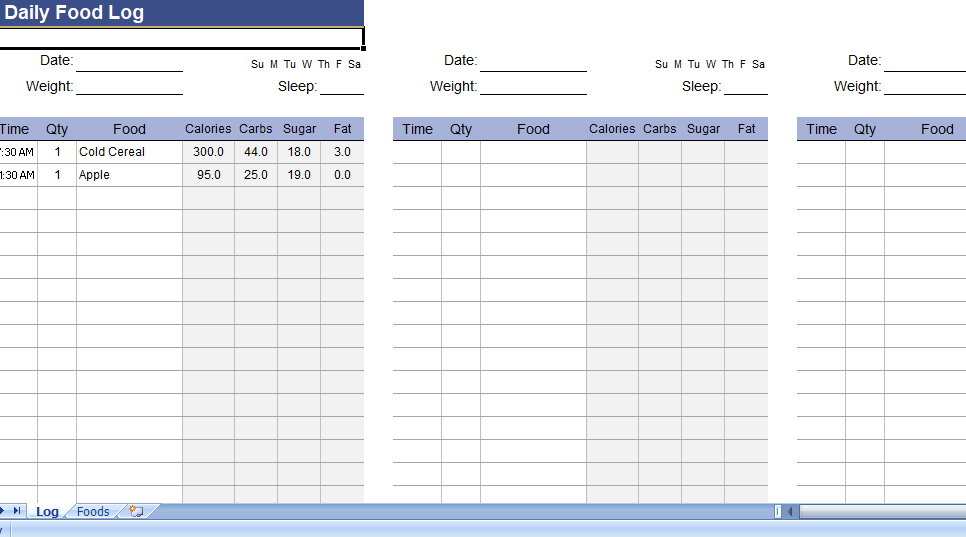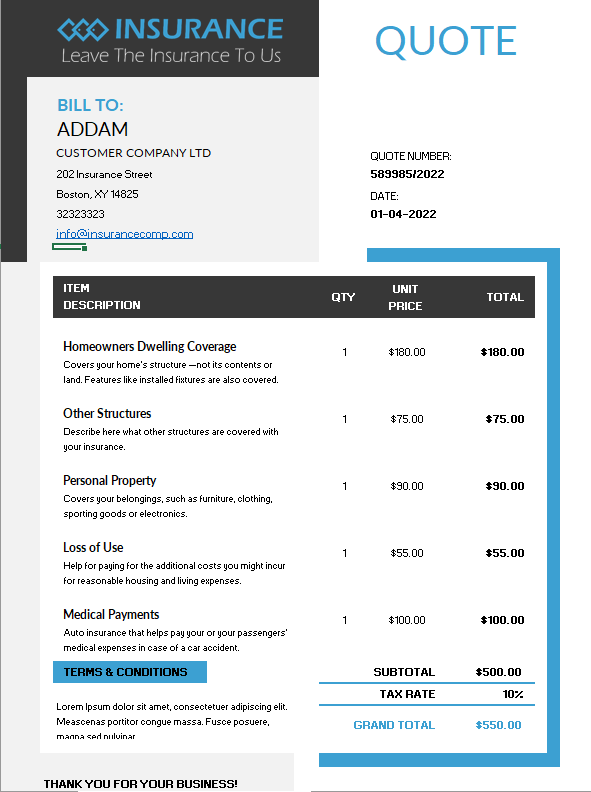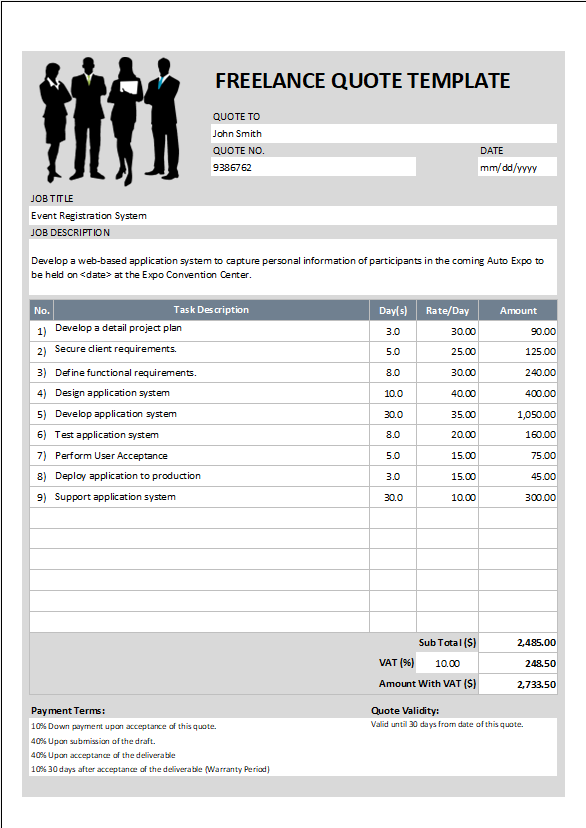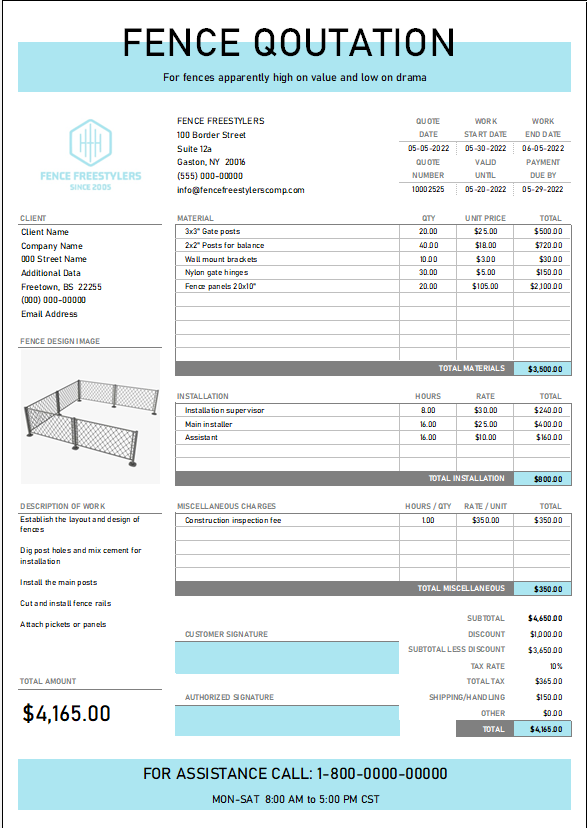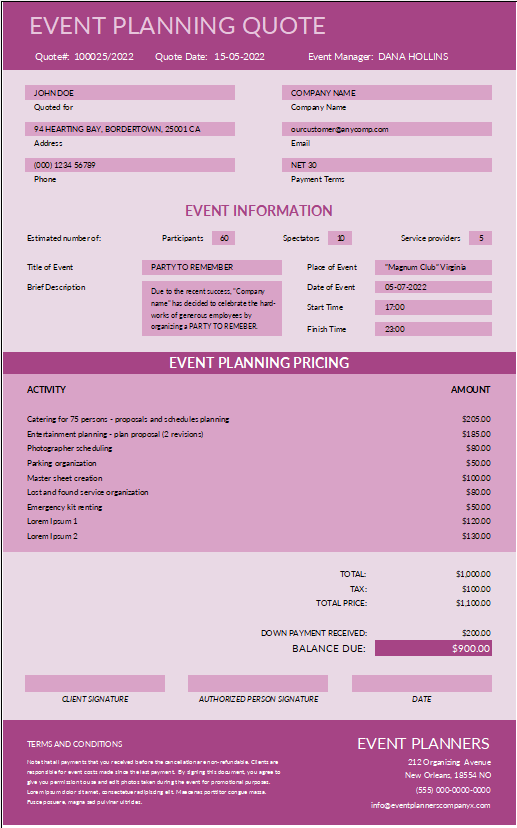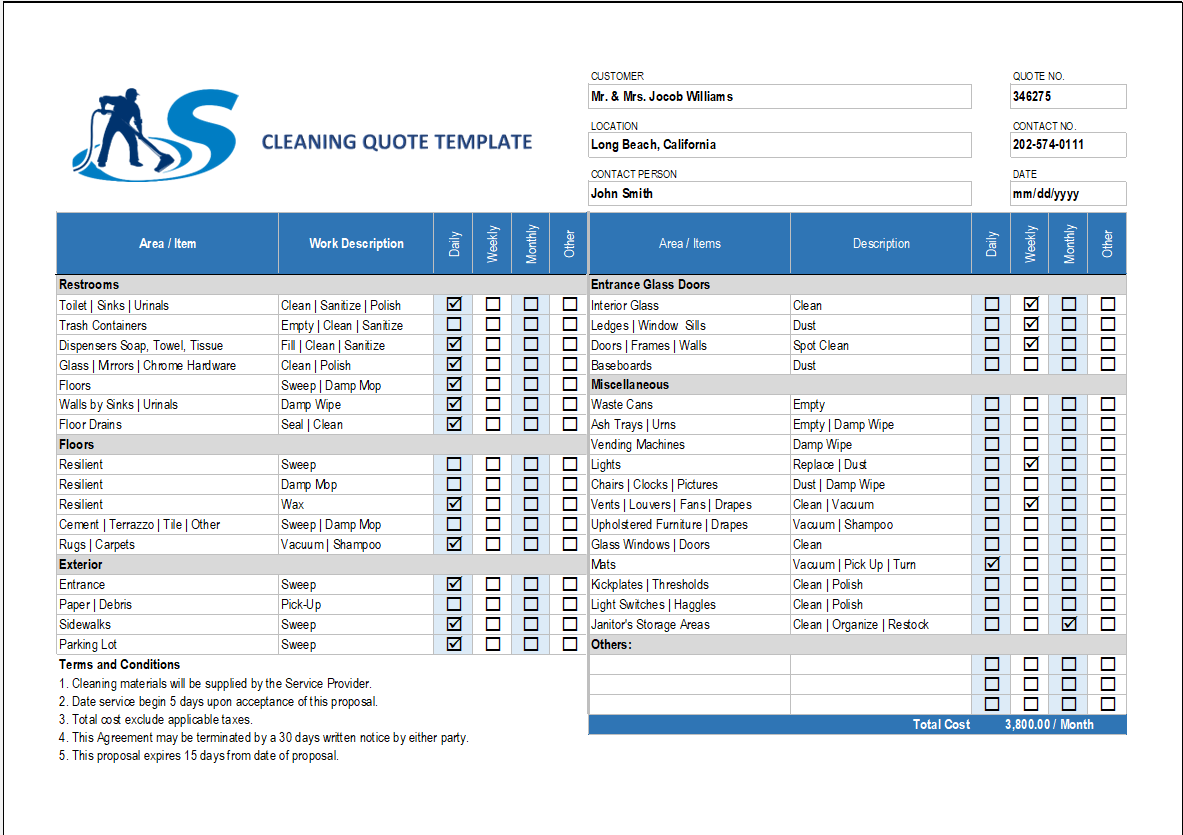Use our free printable daily food log to track what you eat and drink in a day along with your fitness activities, weight, blood sugar level and blood pressure. A food diary and fitness tracker can be useful for controlling and losing weight and developing good health habits. Our food log is design to be printed and folded then completed by hand.
Free printable daily food log
Customize a daily food log and track the things that are most important for you. The new XLSX version allows you to enter more details in the Exercise/Activity section, such as the amount of time or the distance that you ran or walk or the weight-lifting exercises you do. We’ve also included a section for tracking your blood sugar and blood pressure levels, and modified the formatting to make it more obvious what should be done and what cells contain formulas.
Using the Food Log
You can fold it into 3 then again in half, allowing you to store the paper in your pocket easy for you to record what you eat throughout the day.
The Nutrition Facts on most store-bought food gives the serving size, calories, fat content, etc.
Record the Amount of Water you Drink: When drinking from a glass, I drink about 1 fluid oz per swallow. That is a pretty easy one to test.
Record Blood Sugar Level and Blood Pressure: The new version includes a section for logging, but if you don’t need this section you can delete these rows and insert more rows in the food diary or exercise sections.
Daily food diary app
This food log is design for printing, but this version can also be useful for an electronic food diary. We’ve added a feature that helps you calculate your total daily calorie/fat/carbs intake. You can enter common foods that you eat into the Food worksheet, and these foods will show up in the dropdown list in the food log. The calories and other nutrition info will automatically update .
My daily meal log
Edit the Foods worksheet to list the foods that you eat along with the base quantity and the amount of calories, fat, carbs, sugars, sodium, protein, etc. The base quantity does not necessarily to be just a single serving. For example, if you always eat the same amount of cereal every morning, you could enter the calories and other facts corresponding to a typical bowl of cereal and then use 1 bowl of it as your base quantity. Another example would be using a base quantity of 1 cookie so that when you enter the Qty into the food log you can just enter the number of cookies that you ate.
You can still enter values manually into the food log but this will overwrite the formulas that are there in the sheet. So, if you are going to be using the food log in this way, we recommend you to duplicate the Log worksheet a few times so that you can start with a blank working copy of the worksheet when you need.

